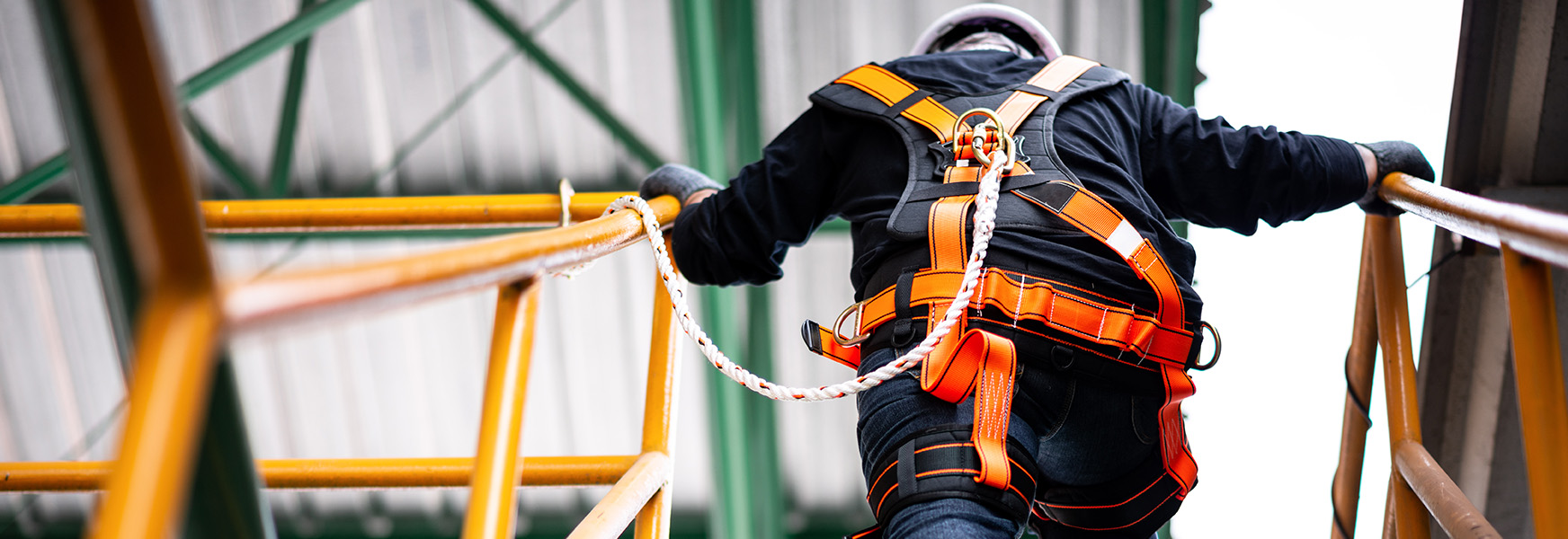Spelling Out Fall Protection Beyond the A-B-Cs

Most employers, and employees, know fall protection is required when working in elevated areas. The distances governing where and what type of fall protection is required changes from industry to industry and business to business, but generally the need to protect workers from falls is understood. It’s common to see guardrails and fall arrest equipment in today’s workplace.
Despite this general awareness, the 2019 NIOSH Publication Prevent Construction Falls from Roofs, Ladders, and Scaffolds shows that, on average, more than 300 construction workers are killed and more than 10,000 seriously injured each year by falls from elevation. That’s about six workers every week who die, and more than 200 each week, or about 30 every day, who suffer serious fall-related injuries.
Some employers choose to ignore OSHA standards to protect workers from falls, while others install guardrails where feasible and, in most other areas, provide fall arrest equipment, relying on the A-B-Cs of fall protection – anchor, body harness and connector. The NIOSH publication above identifies that, of deaths from falling off roofs, 81% occur in the construction industry – with top causes including incorrect anchorage, lack of lanyard attachment, and incorrect length of lifeline.
Injuries while fall arrest equipment is in use generally occur because a single anchor point and connector is inadequate for the work being performed. Yet, when planning for fall protection, it’s essential that estimators, project managers, safety professionals, and front-line supervisors address more than the anchor, body harness and connectors.
To go beyond basic A-B-C safety for work that must be done at elevations, consider the following measures to take when developing or evaluating a fall protection plan:
(Note: Product links are for reference only and do not imply MEMIC endorsement of any product, service, manufacturer, or distributor)
Total work area: Understanding the total area accessed by workers is essential to ensuring appropriate gear is available while the work is performed.
Potential fall distance: This measurement determines whether a six-foot shock-absorbing lanyard, self-retracting lifeline, horizontal lifeline, trailing rope-grab, or another device is best suited to arrest a fall.
Number of workers required at elevation (simultaneously): This is very important as it Is used to determine the total anchorage requirements for workers who are aloft. Most bolt and screw-on, beam clamp, cross-arm strap-style and dee-ring anchorage points are rated for one worker. Similarly, most manufactured horizontal lifelines are limited to a maximum of two workers.
Duration of work at elevation: The total amount of time to perform the work may influence the type of fall protection. For instance, if a job requires workers to caulk a window for an hour, it’s feasible that properly spaced anchor points with two lanyards and one lanyard attached at all times (100% fall protection) is a good solution for a lone worker. However, if the job is to replace the windows, and it’s going to take two workers a full week to do the work, it likely makes sense to install a properly anchored, horizontal lifeline.
Method used to access elevated work area: Whether by ladder, stairs, or aerial lift, access is an essential consideration for all elevated work. Work must be evaluated for vertical ladder safety devices, self-retracting lanyards, trailing rope grabs, standard ladders, stairs, and aerial lifts as methods to ensure workers get up to - and down from - elevated work areas.
Fall protection method during vertical movement: This is where the traditional A-B-Cs of fall protection get spelled out.
Fall protection during horizontal movement: Main choices here are horizontal lifelines or continuous attachment with two lanyards, often referred to as 100% fall protection.
List of equipment to complete task at elevation: Detail all the fall arrest equipment required to safely complete the task. This will ensure that shortcuts aren’t taken when installing and using fall arrest equipment on the job.
Method to rescue fallen and suspended worker: Basic plans can include self-rescue, ladder approach and rescue, aerial lifts, or rope-rescue. In some situations, reliance on local emergency services may be required, but be sure … and have a plan.
OSHA requires that employees be trained on fall hazards in the work area as well as in methods required by the employer to protect workers from those hazards. When conducting training on fall protection for employees, ensure that they go beyond the A-B-Cs of Fall Protection.
MEMIC policy holders can access more resources including Construction Fall Assessment Checklist, Construction Hazard Prevention Video, and Fall Hazard Flow Chart on the MEMIC Safety Director.

